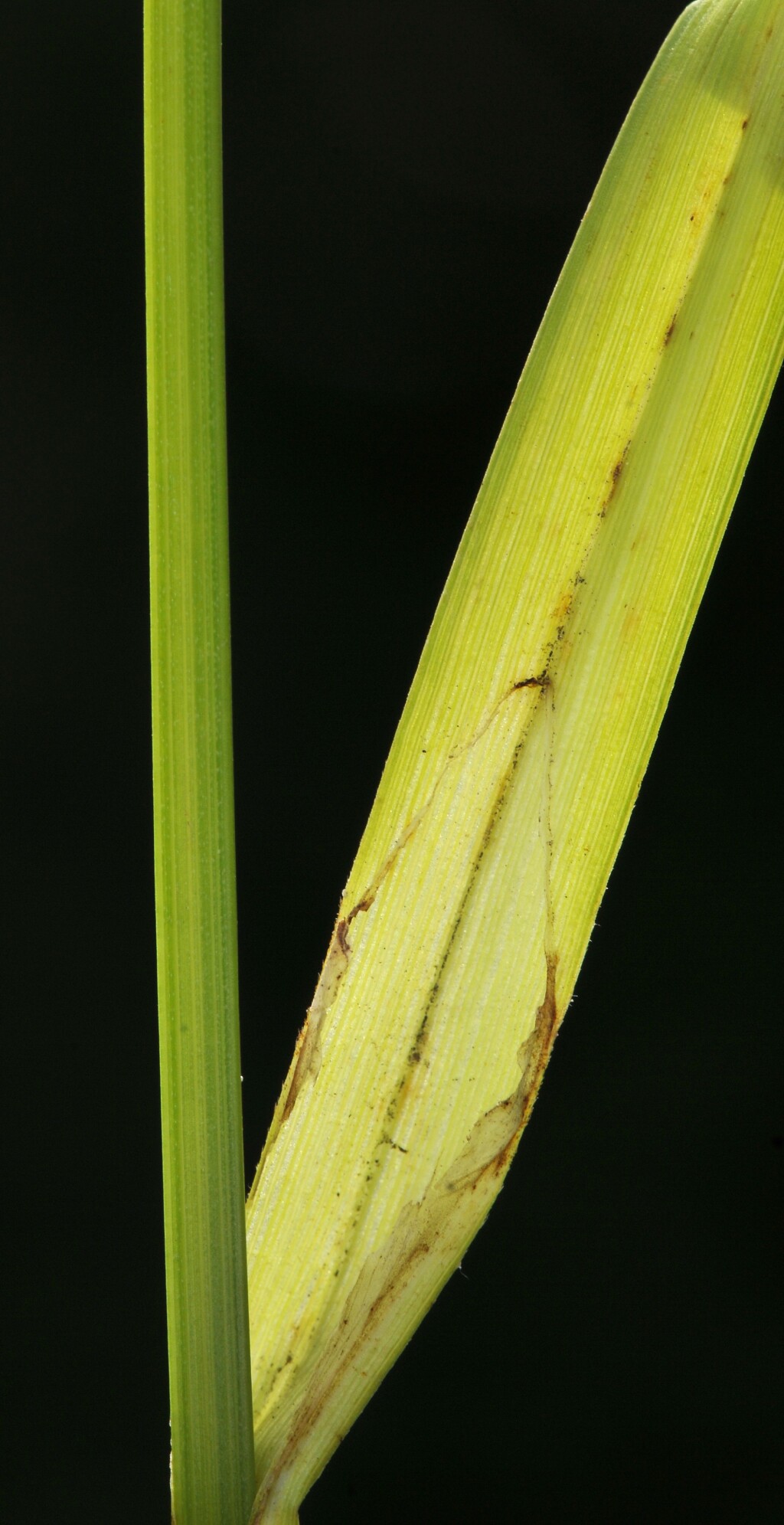Carex brownii
Tuck. Stream SedgeRhizome long; shoots loosely tufted. Culms erect, noded, trigonous, smooth below, scabrous above, 20–100 cm long, 1–1.3 mm diam. Leaves shorter than culms, 4–6 mm wide; sheath pale to dark brown, faintly transversely-septate; ligule obtuse. Inflorescence erect, 2–20 cm long, with 3 or 4 spikes solitary at nodes, the lowest spike often very distant from the rest; lowest involucral bracts exceeding inflorescence. Spikes sessile or occasionally shortly pedunculate, contiguous or distant, erect at maturity, 1–2.5 cm long; uppermost spike entirely male or occasionally with female flowers in middle; lower spikes female; glumes long-acute to truncate, with mucro as long as or exceeding body, whitish with green midrib; female glumes 3–5 mm long; utricles 3.5–4 mm long, c. 1.8 mm diam., obovoid to broad-ellipsoid, turgid, strongly many-nerved, glabrous, usually dark grey-green, occasionally pale yellow-brown; beak 0.5–0.8 mm long, with apex notched; style 3-fid. Nut ellipsoid, trigonous, yellow-brown. Flowers spring–summer.
GleP, Brid, VVP, VRiv, GipP, WaP, NIS, EGL, EGU, HSF, HNF, VAlp. Also Qld, NSW. Naturalised in New Zealand. Uncommon, but widespread along streams through cooler, southern Victoria, extending from near sea-level (e.g. Port Campbell) to the subalps (upper reaches of the Wonnangatta River).
The combination of the uppermost spike usually being male or occasionally with female flowers in the middle, the long-awned male glumes, and the turgid strongly many-nerved utricles are useful field characters. Resembles C. punctata, but differs in the male glumes having the mucro as long as or longer than the body of the glume, and the utricles are not red-dotted. Somewhat similar in appearance to C. gunniana, which has larger utricles which are also dotted red-brown.
Wilson, K.L. (1994). Cyperaceae. In: Walsh, N.G.; Entwisle, T.J., Flora of Victoria Vol. 2, Ferns and Allied Plants, Conifers and Monocotyledons, pp. 238–356. Inkata Press, Melbourne.
 Spinning
Spinning

